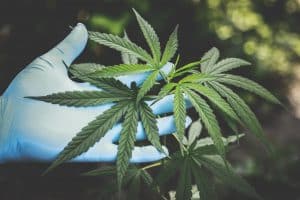What are Phytocannabinoids?

What are Phytocannabinoids?
Phytocannabinoids are any cannabinoid produced in the trichomes of a cannabis plant. When extracted from the plant and consumed, phytocannabinoids interact with our body’s receptors to produce numerous psychotropic and therapeutic effects. All of the plants within the cannabis genus contain compounds called “phytocannabinoids” and there are dozens of different ones. Both plants and animals produce their own cannabinoids. Those produced inside the mammalian body are called endocannabinoids. The effects you’ll experience depend on which phytocannabinoids and terpenes are prominent in this strain.
So what are cannabinoids?
Cannabinoids are a class of lipophilic molecules that interact with the body’s endocannabinoid system (ECS). Phytocannabinoids, or exogenous cannabinoids, are plant-derived cannabinoids produced by glandular trichomes covering the surface of the cannabis plant. Trichomes are responsible for producing all of the plant’s desirable compounds. More than 100 cannabinoids have been discovered in the cannabis plant, though research into their effects has only been done on the most prominent ones, delta-9-tetrahydrocannabinol (THC) and cannabidiol (CBD).
So why does this happen within the cannabis plant?
We know that the human body produces cannabinoids for survival through the activation of homeostasis and the cannabis plant does the same but in far more direct response to external pressures. Phytocannabinoids, produced by the cannabis plant’s trichomes, cover the surface of the plant as a defense against environmental hazards such as insect predators and harsh weather conditions. The predators that try to eat the plant end up “high” and prevent the animals from continuing to eat it.
Phytocannabinoid benefits include a wide range of medicinal and therapeutic applications. While there is still a lot of research that needs to be done, a sizable body of scientific research suggests that phytocannabinoids can reduce pain, anxiety, and inflammation, and provide other healthful benefits. Here are the two most popular phytocannabinoids and their benefits:
Delta-9-THC
Commonly known as THC — is the main intoxicating component of cannabis. THC intoxication has been shown to increase blood flow to the prefrontal cortex, the region of the brain responsible for decision-making, attention, motor skills, and other executive functions. The exact nature of THC’s effects on these functions will vary from person to person. When THC binds to CB1 receptors in the brain’s reward system, it can trigger feelings of euphoria. Much of THC’s ability to relieve pain is due to its interaction with CB1 receptors in the midbrain.
CBD
Cannabidiol (CBD), the second-most abundant cannabinoid in cannabis, has many potential therapeutic benefits, including anti-inflammatory, analgesic, anti-anxiety, and anti-epileptic properties. Cannabidiol can be sourced from both marijuana and hemp plants.


